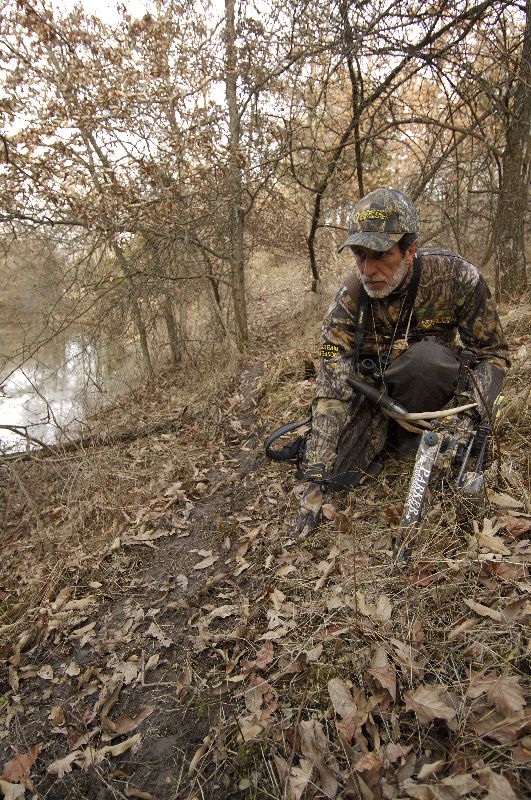RUBS: From September 20 on, a cluster of big trees/saplings (5 inches or more in diameter) that bucks have rubbed fresh to the inner bark with that antlers tells you a shooter buck is probably using a fall core area nearby. Good places to find concentrations of rubs include oak ridges where acorns fall; draws and ditches thick with cover; field edges; and in creek and river bottoms. Look for high concentrations of rubs and then hunt in the area.
DEER TRACKS: Two to 3-inch prints tell you little—could be an adult doe or a buck. Deep, splayed tracks 3 to 4 inches long are what you are looking for. A buck with some age and heft left those tracks, though the size of his rack size is anybody’s guess.
SCRAPES: In late October and November, scout for 20 or more freshly pawed scrapes on a ridge or in a bottom. Every serious scrape will be near thick cover and have a chewed, broken “lick branch” hanging above it, where a buck worked it to leave his saliva and scent. Look around the scrapes. Big, thrashed trees (rubs) near scrapes (and possibly huge hoof prints in the moist dirt inside a scrape) are telltale sign of at least one mature buck in the area.
DEER TRAILS: The wider, muddier and more prominent the path between thickets and fields and/or mast sites where deer feed the better. Bucks prowl on, across and downwind of major doe runs throughout the fall and especially when the rut cranks. You can never go wrong by hanging a tree stand and watching a well-used and fresh trail.

